An X-ray surprise!
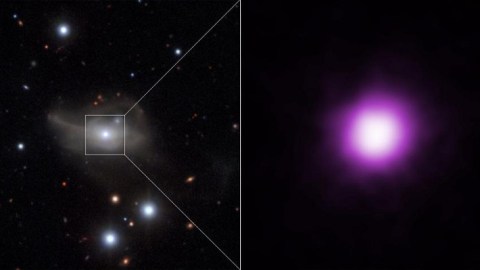
When black holes stop eating, galaxies fade away.
“I’ll never, ever be full. I’ll always be hungry. Obviously, I’m not talking about food.” –Dwayne ‘The Rock’ Johnson
Most large galaxies are illuminated by billions of stars, but some cosmic monstrosities have an even greater source of light: an active, supermassive, feeding black hole.
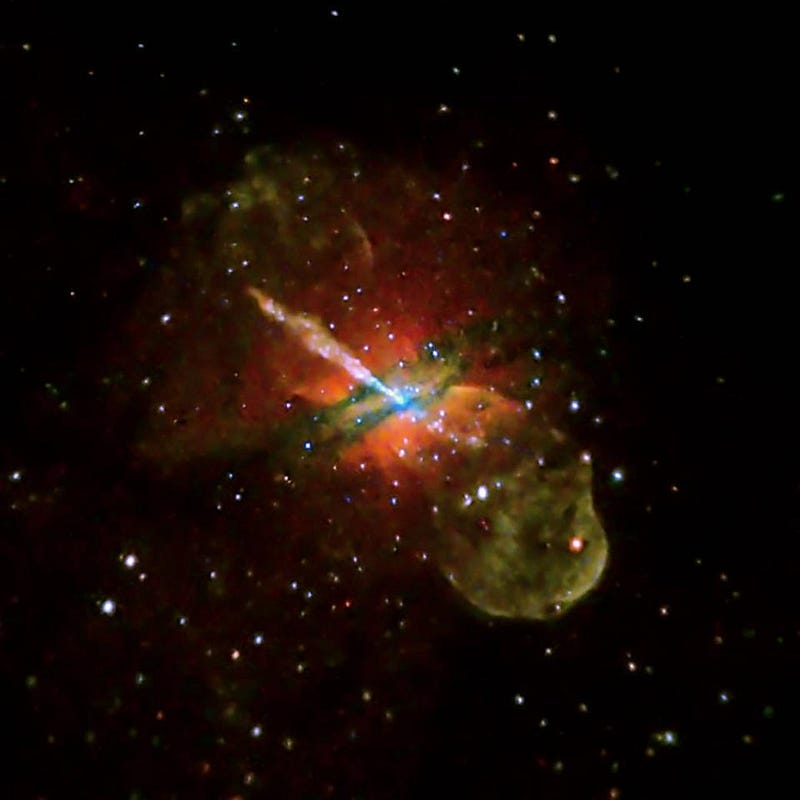
They outshine all others in terms of brightness, and show unique signs over the entire electromagnetic spectrum.
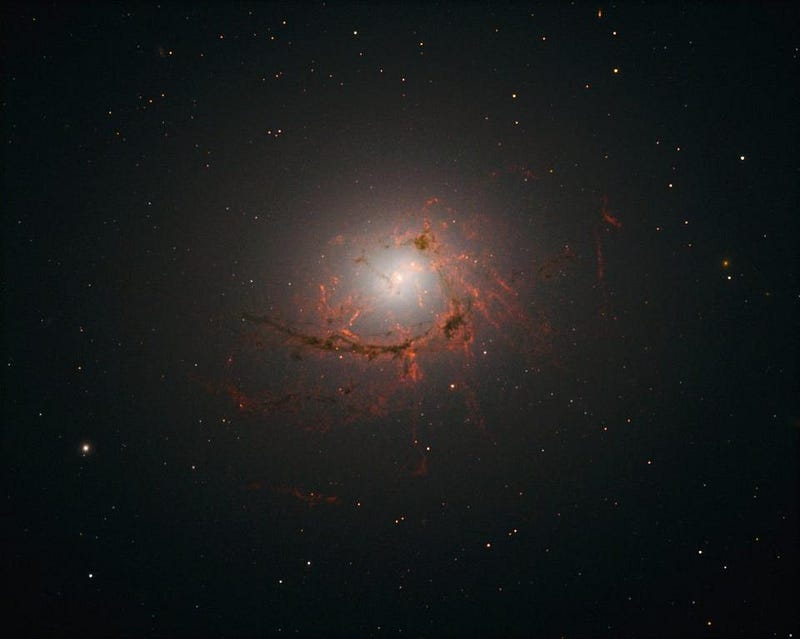
Physically, the intense outburst heats up and shocks the surrounding matter as the black hole devours matter.
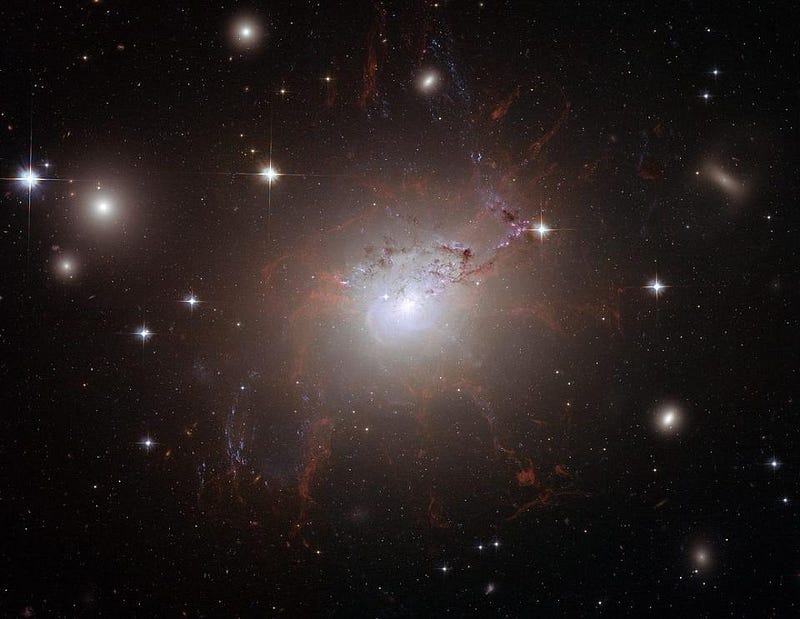
After the black hole stops feeding, some intense emission remains, even extending beyond the galaxy’s stars.
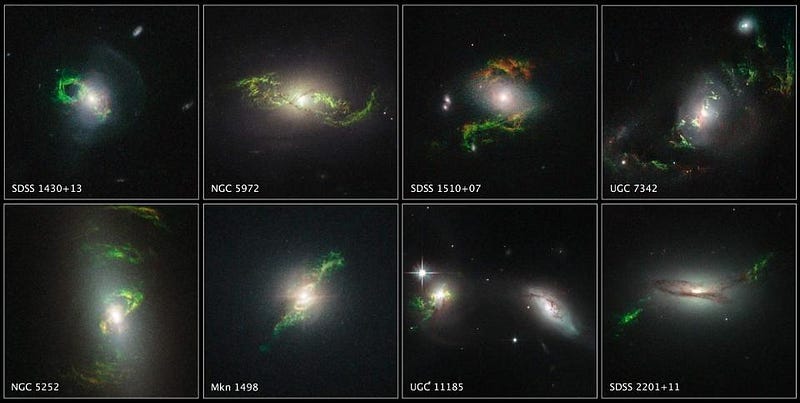
The orientation of an active galactic nucleus determines what we observe, but they’re fundamentally a single class of object.
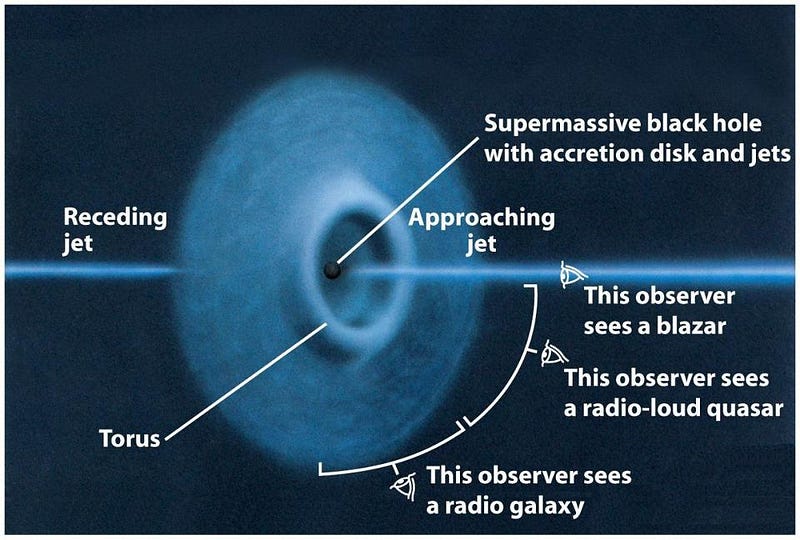
For the first time, we’ve witnessed a single galaxy brighten and fade in detail: from inactive to active and back.
This galaxy in the constellation of Cetus, Markarian 1018, was viewed across the electromagnetic spectrum.
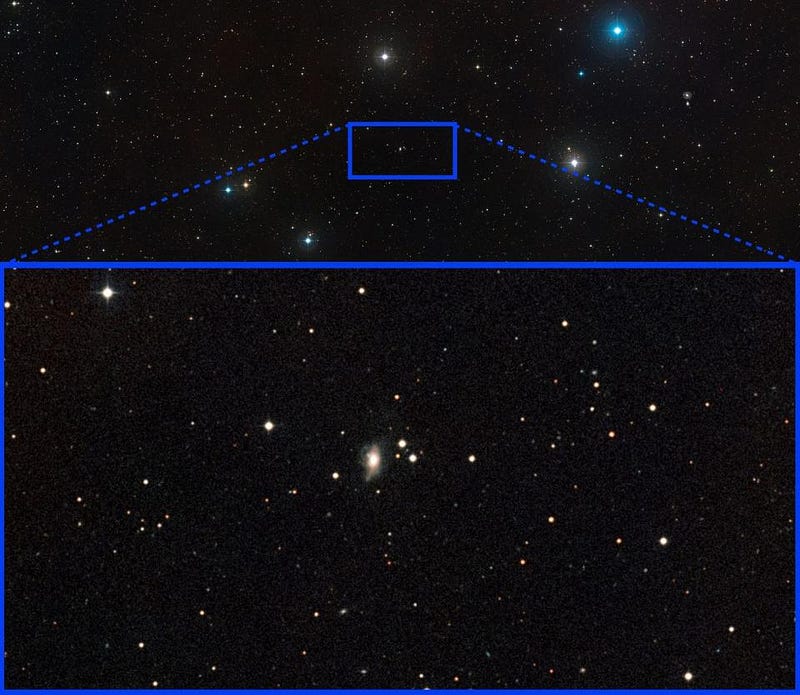
From GALEX (UV) to the VLT (radio) and many other bands, the entire galaxy brightened in the 1980s and faded in the 2010s.
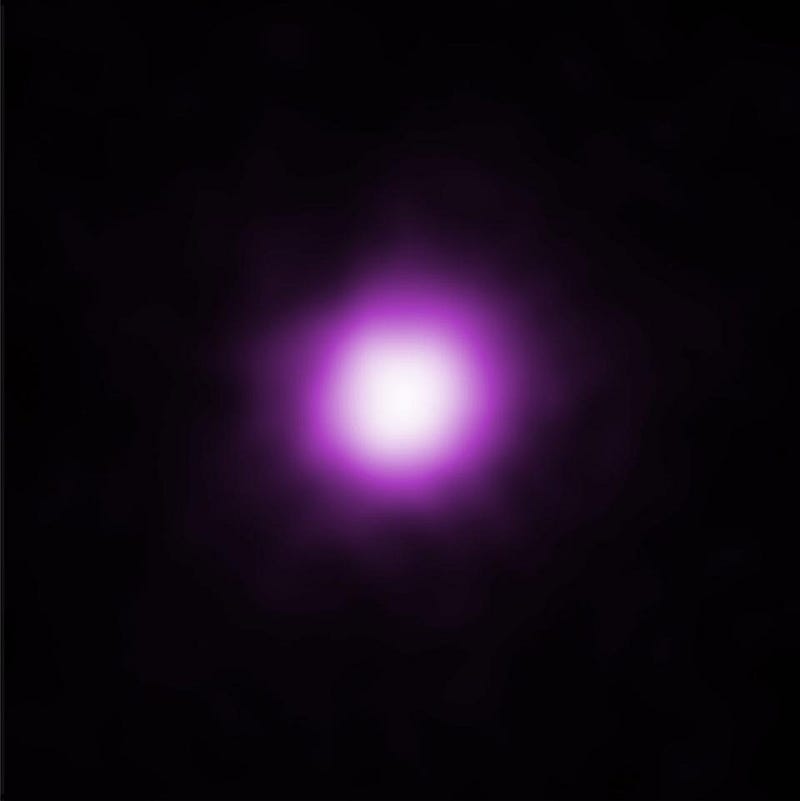
But it’s the X-rays, from Chandra, that are most revealing: dimming by a factor of 8 from 2010 to 2016.
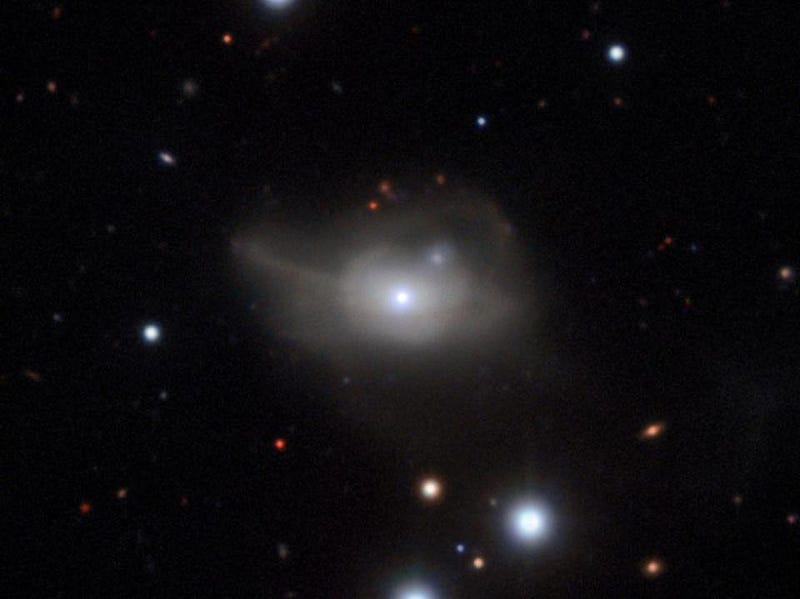
Starve the black hole, and your galaxy dims. An incredible cosmic lesson that we’ve now seen firsthand!
Mostly Mute Monday tells the cosmic story of a single astronomical phenomenon or object in visuals and no more than 200 words.
This post first appeared at Forbes, and is brought to you ad-free by our Patreon supporters. Comment on our forum, & buy our first book: Beyond The Galaxy!





